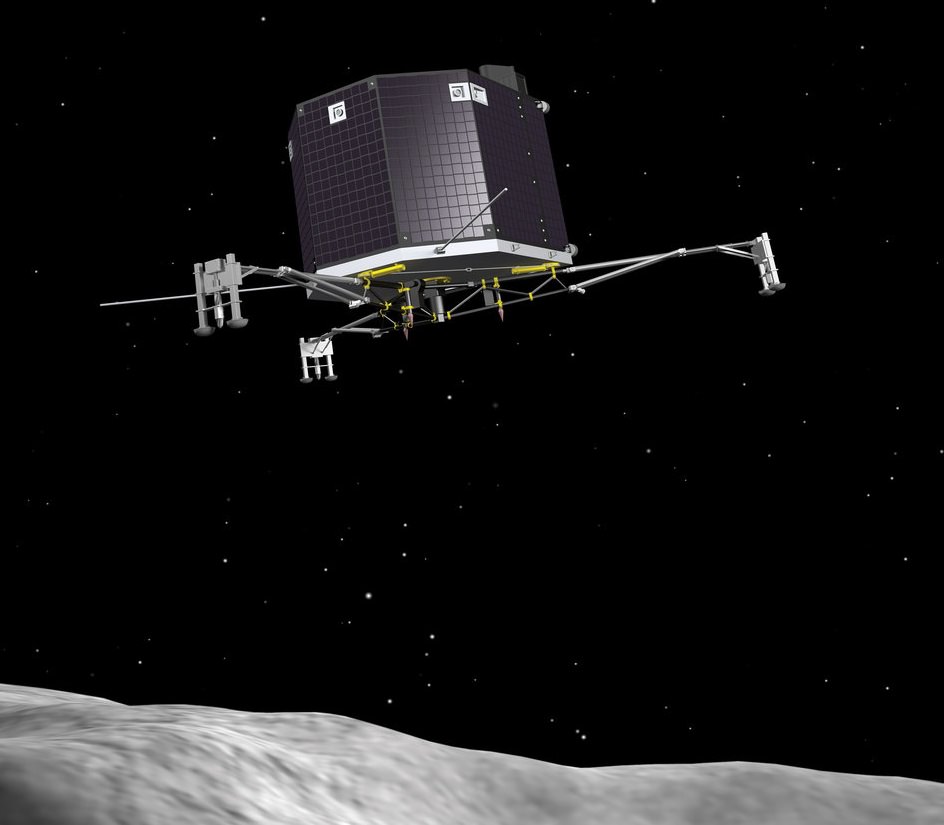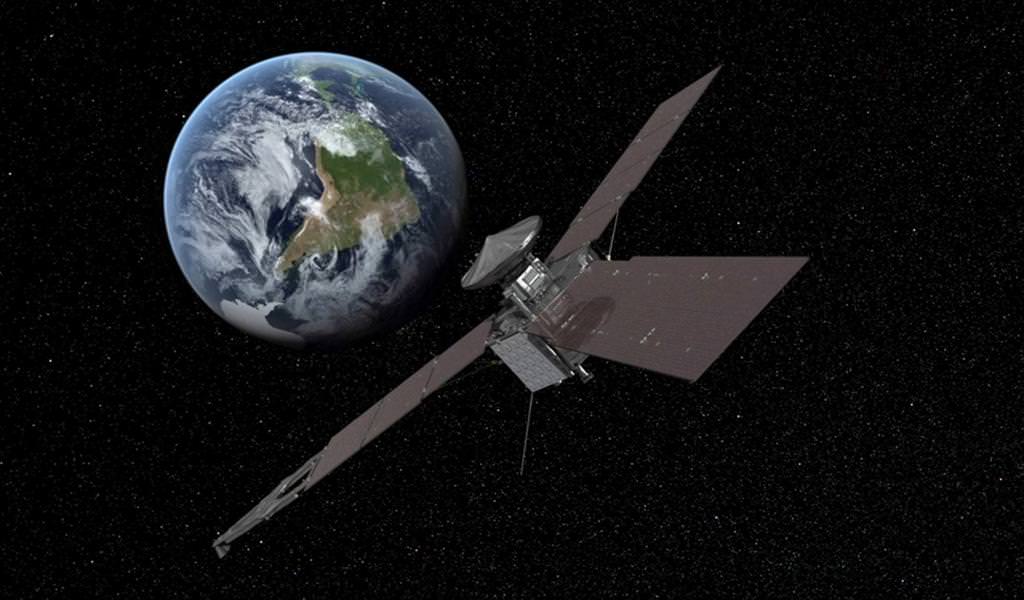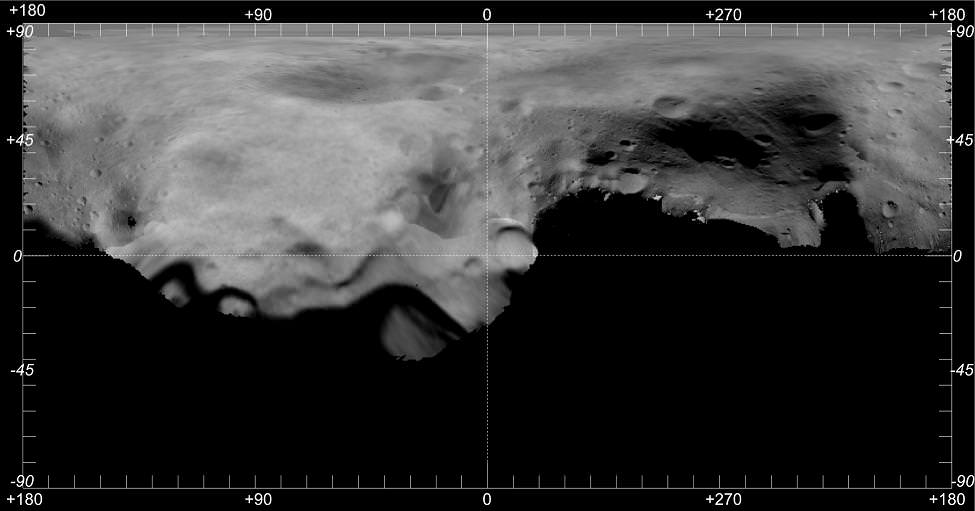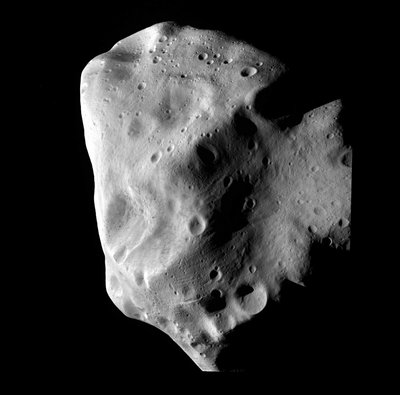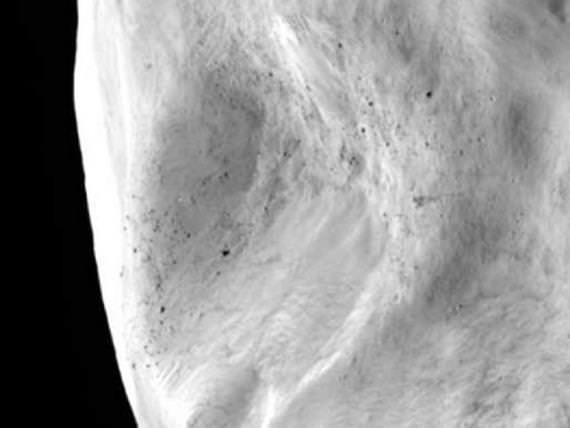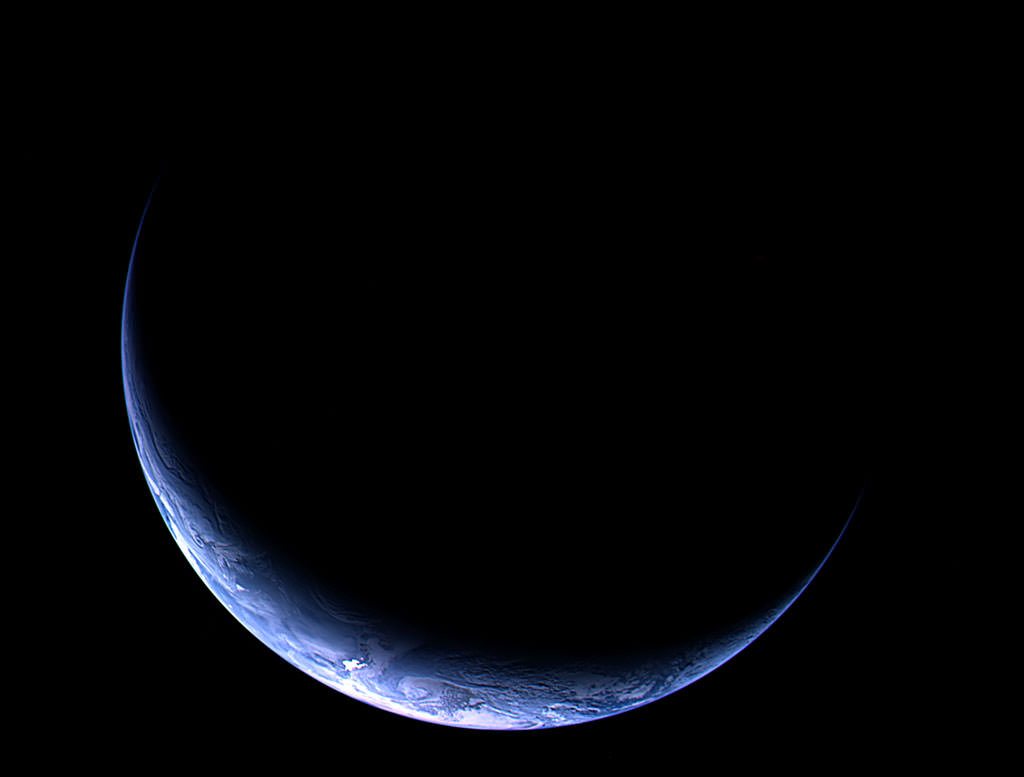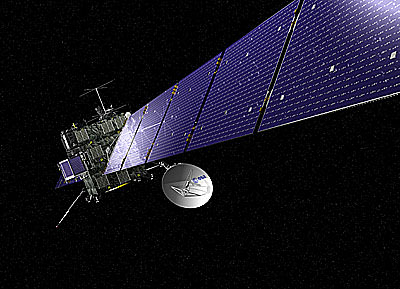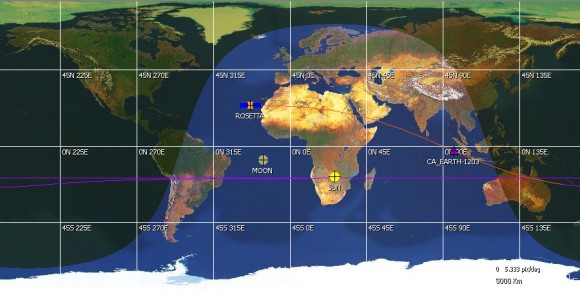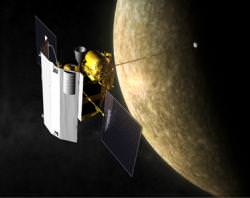Watch out, you comet, Rosetta is on its way with a probe. The European Space Agency spacecraft is preparing to wake up in January from a nearly three-year-long hibernation period to ready for a close encounter with Comet 67P/Churyumov–Gerasimenko.
If all goes well, Rosetta should reach its destination in August and — after a couple of months in a mapping orbit — comes another exciting bit: the probe will deploy a spider-like lander called Philae on the surface in November. That will be the first time anything has soft-landed on a comet.
Philae has a ream of scientific instruments on board, most notably a drill that can penetrate as far as 20 centimeters (eight inches) into whatever lies below it. It can then pick up the samples and analyze them right on sight. This will allow the lander to learn more about what the comet’s surface and subsurface are made of, ESA says, and to figure out how its nucleus is constructed. (You can read more technical details here.)
A big concern, of course, is keeping Philae anchored on the low gravity of the comet (as was covered extensively in this past Universe Today story).
“As Philae touches down on the comet, two harpoons will anchor it to the surface; the self-adjusting landing gear will ensure that it stays upright, even on a slope, and then the lander’s feet will drill into the ground to secure it to the comet’s surface in the low gravity environment,” ESA wrote.
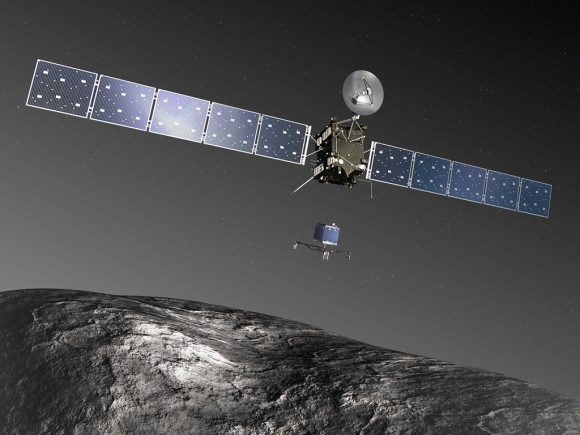
But first comes Rosetta’s reactivation. ESA is so excited about this forthcoming milestone on Jan. 20 that it’s inviting the public to send in videos where people tell the spacecraft, essentially, to wake up after 31 months of hibernation. (The campaign is called “Wake Up, Rosetta”, and more contest details are here.)
What’s cute is that the official Rosetta Twitter account (@ESA_Rosetta) will become more exciting then as well. The last update, from Dec. 3, simply says “still sleeping” (as most of the updates do.) In response to someone asking the account to write something else this summer, the Twitter response was laconic: “A sleeping probe cannot tweet.”
But keep your eyes peeled even after the landing. Rosetta plans to stay with the comet as the icy body moves closer to the solar system, watching as the sun’s heat changes its surface. Read more about the mission here.

